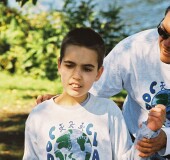
THURSDAY, May 24 (HealthDay News) — Even though autism symptoms typically emerge before age 3, most children with autism are diagnosed when they’re 5 or older, a new snapshot of autism in America shows.
More than half of U.S. children with an autism spectrum disorder are taking at least one psychotropic medicine — including stimulants, anti-anxiety medications, antidepressants, sleep aids, seizure medications or antipsychotics — even though there are no drugs that have clearly been shown to impact the core symptoms of the disorder.
The findings are from a nationally representative survey of more than 4,000 parents or guardians of children with special needs aged 6 to 17, including about 1,400 who had an autism spectrum disorder. The report was compiled by researchers from the U.S National Institute of Mental Health in conjunction with the U.S. Centers for Disease Control and Prevention.
“This is a snapshot of what the nation looks like. American families can compare their experience to what others have found,” said study co-author Lisa Colpe, chief of the office of clinical and population epidemiology research at the U.S. National Institute of Mental Health.
Among the other key findings:
- About 19 percent of kids were diagnosed with an autism spectrum disorder at age 2 or younger; 17 percent were diagnosed at age 3; 13 percent were age 4; 11.5 percent were age 5; and nearly 40 percent were 6 or older when they were diagnosed.
- Children were identified by a range of health care professionals, including pediatricians, family physicians, nurse practitioners, psychologists, developmental psychologists, neurologists and multidisciplinary teams.
- Nine of 10 school-aged children with an autism spectrum disorder use at least one service to meet their developmental needs, while just over half of the kids use three or more services.
- The most common service is social skills training, followed by speech or language therapy. Others include behavioral interventions and occupational therapy.
Geraldine Dawson, chief science officer for Autism Speaks, said findings show the continued need to work toward identifying children earlier.
“Research tells us that children who start intervention earlier do better in the long run. This report found that the majority of children were 5 years or older when they were first identified. We can reliably diagnose autism by 24 months, so professionals need to do a better job, including screening all children at 18 and 24 months,” Dawson said.
Only about 40 percent of school-aged children with an autism spectrum disorder receive behavioral intervention, even though research has shown such strategies can “significantly improve outcomes,” she added.
Lack of insurance coverage and too few trained providers with expertise in behavioral interventions are reasons why some children aren’t getting the services, Dawson noted. “It is critical that we address the barriers that are preventing children from receiving early intervention. Early intervention will result in better outcomes for children and provide substantial cost savings in the long run,” Dawson said.
Autism is a neurodevelopmental disorder characterized by problems with social interaction, communication and restricted interests and behaviors. That includes repetitive behaviors, such as arm-flapping or head-banging; having an obsessive interest in one topic; having a need to stick to a specific ritual or routine; and experiencing distress or agitation when that routine gets disrupted.
About one in 88 U.S. children has the disorder, according to the CDC.
Children with autism can also have co-existing conditions, such as anxiety, seizures, depression or attention-deficit/hyperactivity disorder (ADHD). Experts say it’s not always easy for parents and doctors to know whether symptoms are autism-related or a co-existing condition, but many will try various drugs to alleviate the symptoms.
“The findings with respect to psychotropic medication use is in line with previous findings,” Dawson said. “Children with autism often have co-occurring conditions, such as ADHD and anxiety, which are often helped with medication.”
Because some of the drugs to treat those conditions can be powerful, Colpe said it was a good sign that so many children (upwards of 90 percent) were also receiving some other sort of treatment, indicating that they are being monitored by a physician.
“They are getting a multi-mode treatment,” Colpe said.
More information
The U.S. National Institute of Mental Health has more on autism.

